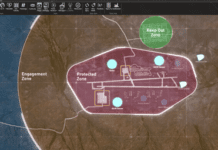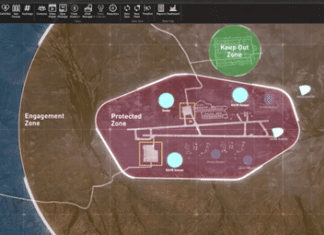This post is also available in:
 עברית (Hebrew)
עברית (Hebrew)
In an extraordinary feat of space engineering, China managed to have its satellite perform a groundbreaking maneuver to avert a potential asteroid disaster. This experiment shows that existing Earth observation systems can be repurposed to enhance early warning capabilities for high-risk asteroids.
The asteroid in question is the enormous 1994 PC1 that was 2 million kilometers away from Earth (five times farther than the moon), which is the reason astronomers have been struggling to track its path. Furthermore, despite its large size, the asteroid’s great distance made it hard to determine if it would hit Earth.
According to Interesting Engineering, the Chinese Jilin-1 satellite (that is usually used for Earth observation) performed a remarkable maneuver to help track the asteroid and made an unusual move to aim its camera into space to then snap photos of the 1994 PC1 every second, capturing crucial data. These images allowed scientists to confirm that 1994 PC1 would safely pass by Earth, averting any risk of collision.
The project team, led by Professor Liu Jing of the National Astronomical Observatory of the Chinese Academy of Sciences, stated: “Follow-up experiments will be conducted to observe fainter near-Earth asteroids using existing space-based equipment.” The research regarding this revolutionary maneuver was published in the Chinese Journal of Deep Space Exploration.
Though the mission itself was conducted back in January of 2022, it remained undisclosed until it was recently declassified by the Chinese government. This remarkable achievement highlights the sophisticated capabilities of Chinese satellites, which is causing unease in Western nations, particularly the United States.
The growing concern is that China’s expanding space capabilities could be leveraged for military purposes and potentially upset the strategic balance in space. The Jilin-1 constellation, which consists of over 100 satellites, forms the backbone of China’s Earth observation network. These are satellites that are known for their rapid, high-resolution imaging capabilities, which in the past have proven to be capable of capturing intricate details like an American F-22 fighter jet in flight and a rocket launch.
While the ESA and NASA have long been exploring the use of dedicated satellites for asteroid observation, these plans have so far remained largely theoretical. China’s successful experiment, on the other hand, demonstrates that existing Earth observation systems can be repurposed to enhance early warning capabilities for high-risk asteroids.
Looking ahead, the Chinese team reportedly plans on incorporating a large ground-based radar network to refine their tracking and targeting capabilities further.


























